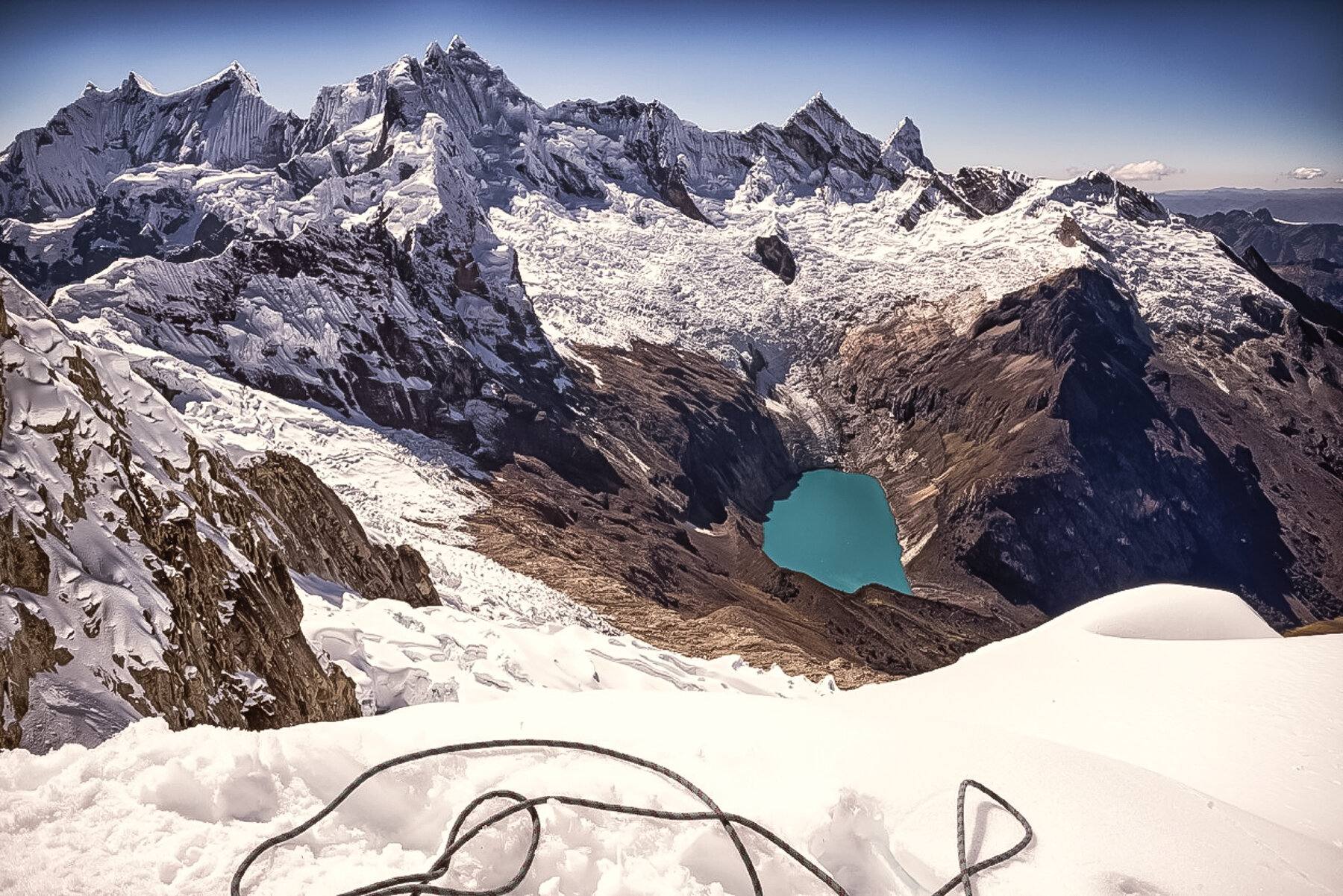IN THE ANDES WITH THE 28MM SUMMARON
I packed Leica’s reissued 28mm Summaron f/5.6 as the sole companion to my M10 last summer during a two week expedition in the Peruvian Andes.
Our goal was to climb Alpamayo, an almost perfect pyramid nestled 5947 m high in the Cordillera Blanca. Its dramatic, fluted southwest face requires 13 pitches of ice climbing to reach the summit. But before attempting the face, it takes at least a week of approach and acclimatization.
Why bring the 28 Summaron? A lens I had never used before? There are practical reasons like its tiny size and reputation as a classic landscape focal length. But more importantly, vintage lenses capture the imagination. As hobbyists and aficionados, we study classic landscape and street images and dream of replicating them. Vintage reissues like the 28 Summaron give us a link to the past, the possibility to create something unique, timeless. I wanted contrasty, sharp images with vignetting and lens flare. I didn’t care about its slow f/5.6 aperture, because in the mountains, one thing you have enough of is light.
The Summaron did not disappoint. It was easy to use and carry, and while I didn’t appreciate the quality of images at the time, squinting at the LCD screen on the back of the M10, the RAW files looked good and required little processing.
In general, I am most comfortable with the 50 Lux used in the traditional manner — focusing through the rangefinder, using the A mode to balance depth of focus and exposure. It took a few days to get used to the Summaron, but eventually, I developed a workable system.
I discovered that its small aperture made focusing through the rangefinder redundant. I learned to set the aperture based on the depth of field desired, then set the focusing scale, note the hyperfocal distance, and frame the shot using live view. I never had to truly “focus” the lens unless I was attempting a portrait. Lastly, I kept the M10 on center-weighted metering and didn’t need to bracket my shots.
Our journey to the summit of Alpamayo began in the hot, dusty town of Cashapampa (2500m). How could it be so hot at this altitude? Cashapampa and the Santa Cruz Valley rest just 9 degrees south of the Equator. Our caravan consisted of three climbers, two guides, a pair of porters, and a small herd of donkeys carrying our gear. During our two day hike to base camp, we gained about 1200 m, and as the temperature became cooler, the landscape became more beautiful, with glimpses of waterfalls, jagged white peaks, and unusual flora.
It is difficult to hike and carry a tank like the M10, so I kept it safely ensconced in my pack. We would take breaks every hour or so, and I would pull out the camera and take some shots.
Eventually, we arrived to basecamp and began our acclimatization routine — climb high and sleep low. I would carry the M10 in my pack and sneak shots as often as I could.
As we didn’t have electricity, my battery died after 8 days, but I have since come up with a solution — using a solar panel and a USB to DC adaptor purchased through Amazon that allows me to use the Leica DC charger linked directly to the solar panel.






